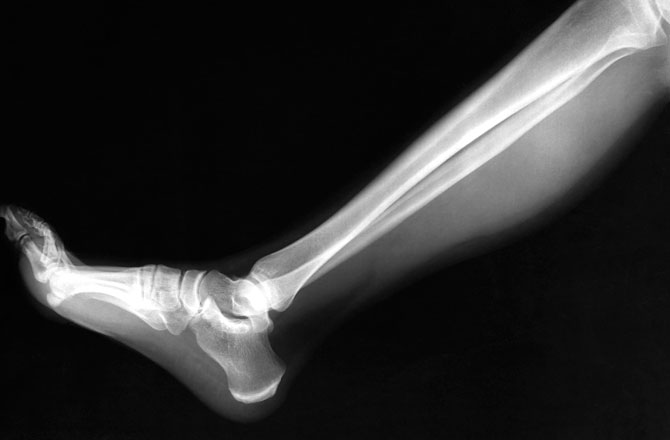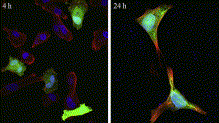A team of researchers from the University of Iowa has developed a new way to regrow bone that is missing or damaged in the body, using a remarkable new bio-patch that sends instructions straight to your cells. The procedure tells your body to produce bone by using particles embedded with DNA.
The team took a different approach to this kind of research, as previous studies have focused mainly on procedures outside of the body. Led by Satheesh Elangovan, the team developed the method of sending instructions to bone cells that were already living inside the body. By using fragments of DNA encoded for a platelet-derived growth factor, called PDGF-B, these natural bone cells were able to produce the necessary proteins for the production of the missing or damaged bone.

New biopatch regrows bone; image courtesy of Discovery.com
When performing the procedure, the team then made a collagen scaffold the same size and shape as the bone defect, and using that as a foundation, the patch set to work, using a combination of genetically coded instructions for the bone cells and synthetic plasmids to create a complete regeneration of what was missing. The process took around four weeks. The plasmids used during the procedure are nonviral, which reduces the risk of an unwanted immune response and makes it easier and more cost-effective to mass produce.

Confocal microscopy images from the study.
While the researchers evaluated the regenerative capabilities of the system in vivio , meaning inside a living organism (in this case rats), they evaluated the influence of the collagen scaffold in vitro, or in a test tube or culture dish, using miscroscopy techniques. The confocal microscopy techniques used, seen in the image above, revealed significant data regarding the collagen scaffold, allowing the researchers to better create the bio-patch.

SEM images of empty collagen scaffolds and collagen scaffolds embedded with the team's platelet-derived growth factor.
Test animals have already regrown enough bone to fully cover skull wounds using this procedure, and it has also been shown to stimulate new growth in human bone marrow stromal cells. Researchers hope the bio-path could be used for a variety of injuries involving the bone, including repairing birth defects that result in missing bone around the head or face or providing dentists with a more solid foundation for teeth implants.
For more information, read the entire study on Biomaterials!
Source Discovery.com
Advertisement
Learn more about Electronic Products Magazine





